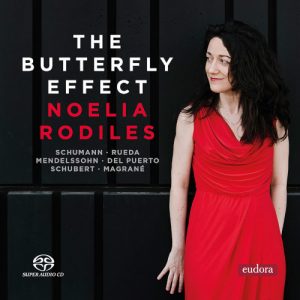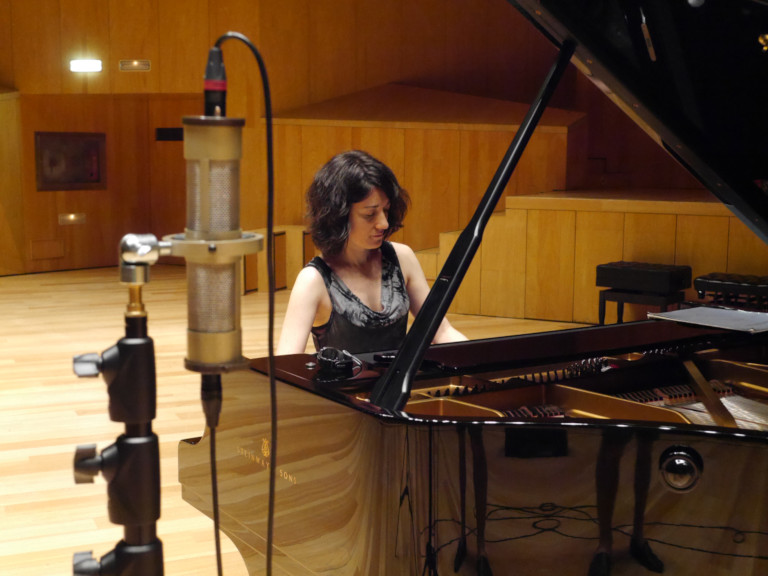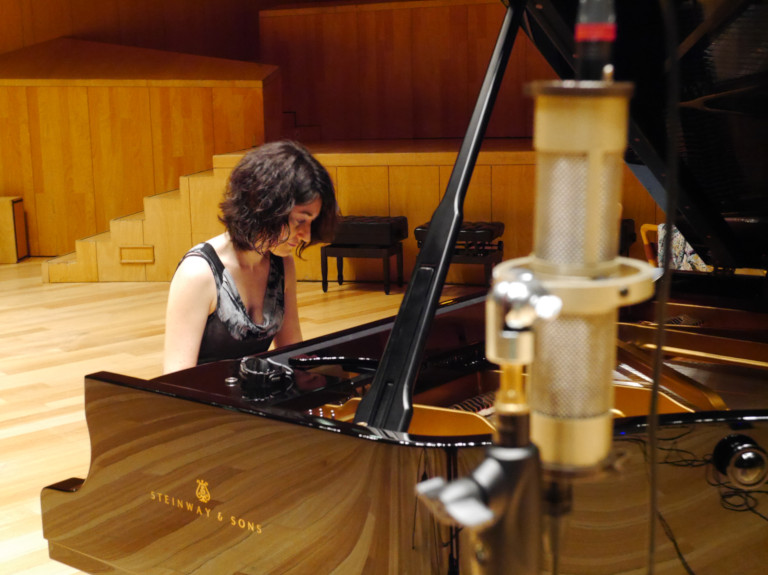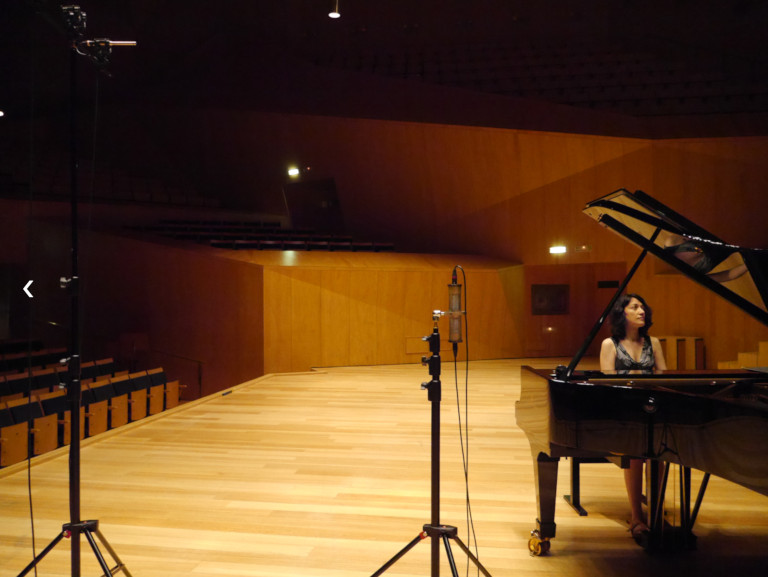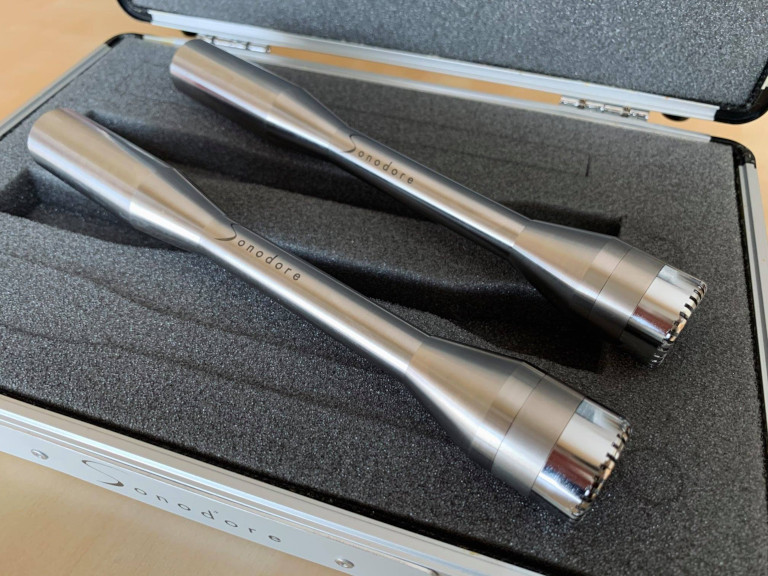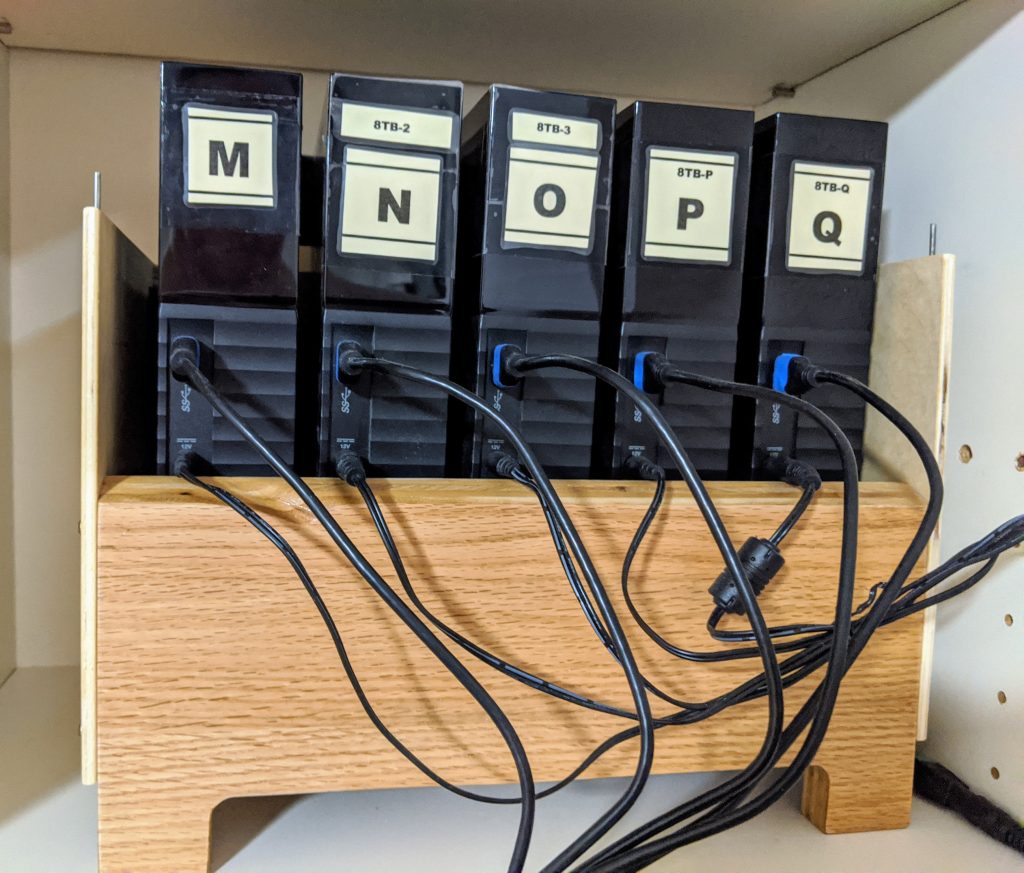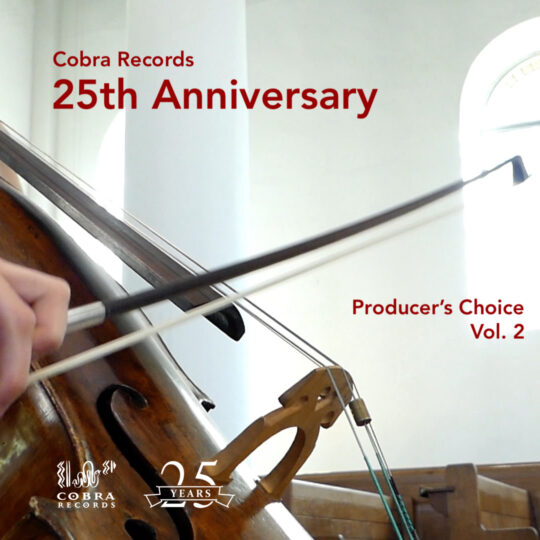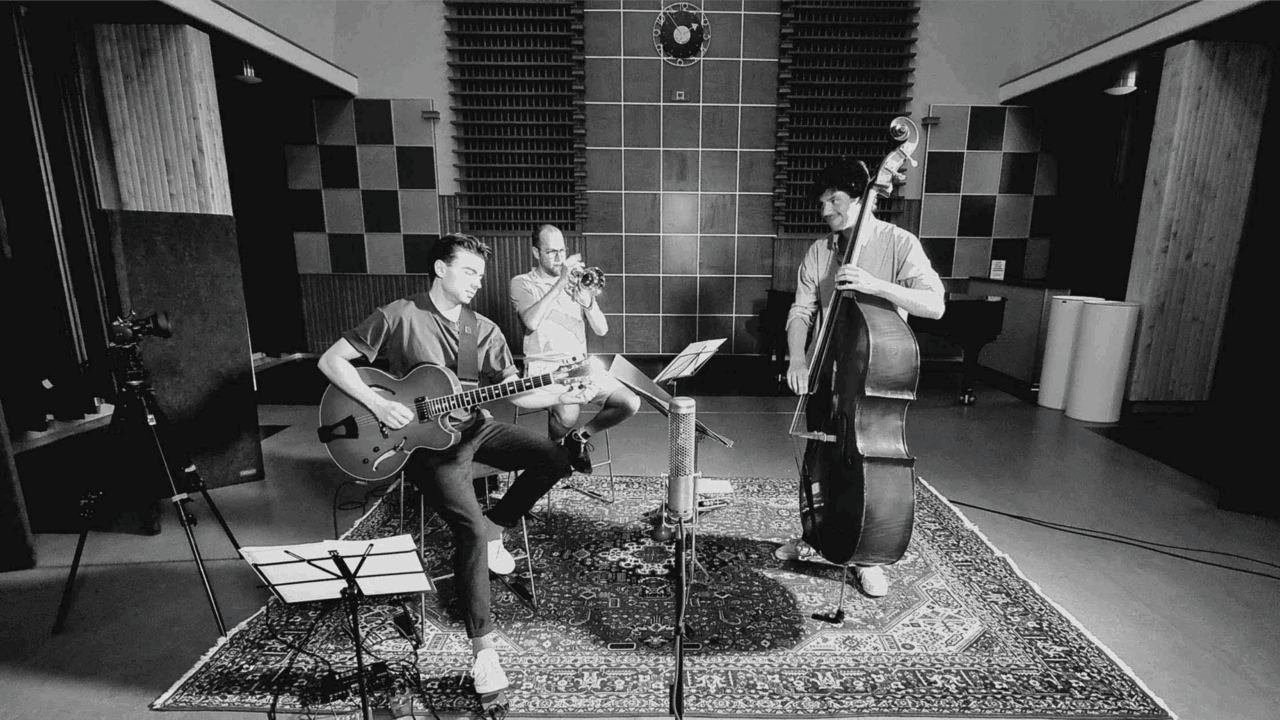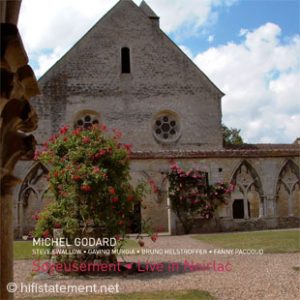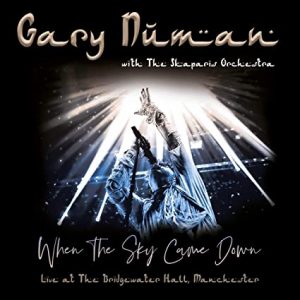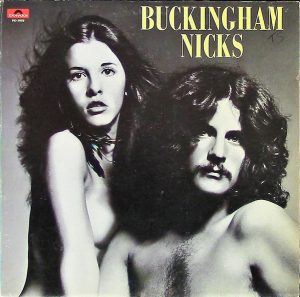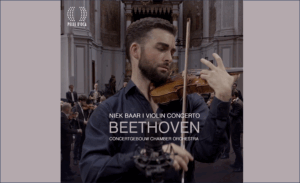With a light and delicate touch, Noelia Rodiles carries us on a rollicking joy filled ride with Schumann, Rueda, Mendelssohn, and del Puerta, then lands us gently with Schubert and Magrane. If some of these names are unfamiliar, I encourage you to join me and explore this lovely recording. Another transparent recording by Gonzalo Noqué in Pure DSD!
The Butterfly Effect, Noelia Rodiles, piano, Eudora Records (2021 (Pure DSD256) HERE
This album brings together three of Noelia Rodiles' favorite Romantic composers – Schumann, Mendelssohn, and Schubert—and three of the best-known Spanish composers of recent years – Jesús Rueda, David del Puerto, and Joan Magrané. The latter three contemporary composers were commissioned by Rodiles to write works freely inspired by Schumann's Papillons, Mendelssohn's Lieder ohne Worte, op.30 and Schubert's Adagio, D178 respectively.
This juxtaposition of well known composers of the past with new compositions from the contemporary period—in this case the German Romantic period and the 21st century—is a practice I heartily endorse and am pleased to see presented here.
The title of this album comes from Jesús Rueda's Sonata No. 5, "The Butterfly Effect". Rueda is a composer new to me. And his sonata has been a very pleasurable discovery. And for me, it is with this work that the album truly comes to life as something very special. The transition at the end of Papillons into Rueda's The Butterfly Effect is a very rewarding listening experience.
Rueda writes, "When Noelia first talked to me about her concept of combining the classical with the new, she gave me absolute freedom to make my own musical connections between Papillons and the new commission. The idea would be to apply the butterfly effect—the theory that the movements of a butterfly's wings in one place can start a chain reaction leading to catastrophe on the other side of the world—to Schumann's own butterflies.
"This led my Sonata No. 5, "The Butterfly Effect", which comprises three movements: Wings, Evanescent, and Perpetuum Mobile. Wings begins with a lightweight motif in the piano's upper register—a volatile gesture which is contrasted with the gravitational weight of the octaves in the left hand. The two meet in the central register in a kind of free-flowing flight. Evanescent evokes an impossible four-part chorale and rises above the void with its questions and responses. The use of the pedal creates the necessary background soundscape above which the musical discourse floats and drifts away. The lightweight motif of the first movement leads into the Perpetuum Mobile, a fleeting toccata that switches breathlessly between chords and arpeggios, like a cataclysm, before coming to an abrupt end."
And I find the piece utterly delightful!
We return to the nineteenth century German romantics with Felix Mendelssohn's Lieder ohne Worte, op. 30, followed by David del Puerto's new composition, Seis Caprichos sin título. Mendelssohn's short, lyrical piano works suggest the vocal and poetic Lied or art song for voice and piano. And, del Puerto's work was conceived as a companion piece. Del Puerto writes, "I also wanted to pay tribute to Mendelssohn the master of counterpoint, the abstract Mendelssohn, the worshipper of Bach, with writing in which polyphony, or even a hint of Baroque form, such as the chaconne, play a leading role."
The album concludes with Schubert's Adagio, D178, juxtaposed with Dues peces per a piano by Joan Magrané who writes: "The Adagio, D178 may be small in scale but it's hugely rich in feeling. A humble and lyrical chorale, of restrained expressiveness, it exploits the full register of the piano (the piano of Schubert's day, of course), with the occasional explosion of drama, and follows (almost) a sonata-form structure pared down to the bare minimum." Magrané takes Schubert's Adagio as a starting point to develop his own thoughts across two interlinked by contrasting movements about which he writes, "The second and final movement (Molto adagio), presents a set of diffuse variations that take as their starting point the notes of Schubert's Adagio, transforming them as a glaze does a painting, or evoking the strange and shifting images of a phantasmagoria."
Altogether, this album presents a very satisfying 77 minutes of musical exploration. Rodiles crosses time periods effortlessly, drawing out similarities and contrasts among the various works that are endlessly rewarding. She delivers on both virtuosic demands of these works and the changing dynamic requirements to create a chromatic wonderland of musical experiences.
All of this is tremendously enhanced by the excellent engineering from Gonzalo Noqué, recording engineer, producer and founder of Eudora Records. The sonic window he achieves with such verisimilitude is what I've come to expect from his recordings. Once again, he has given us the gift of a Pure DSD recording that is open, transparent, and alive. The piano is captured with both delicacy and thunderous impact using Gonzalo's preferred Sonodore microphones directly to DSD256 via the Merging Horus A/D converter.
One mic per channel—no DXD conversion—pure DSD256 recording...
Gonzalo writes about this album, as of February 2020, "I can proudly introduce to you what I think it is sonically my best piano album so far. What you're hearing is as pure as it gets: one microphone per channel, no DXD conversion, a pure DSD256 recording with so few editing points as I had never saw. Main pair are my beloved Sonodore RCM402."
Well done!
All images courtesy of Eudora Records




